Three cities in Morocco are especially known for their ceramic artistry: Meknes, Safi and Fez. Together, they produce at least 80% of the pottery in the country.
The best known workshop in Fez is Art Naji, about a half-mile outside Bab el-Ftouh, the southeastern gate to the Old City. Here you can take a tour and watch craftsmen (and women) chip mosaic tile pieces, paint fanciful designs on plates, assemble elaborate mosaic tile fountain backsplashes and fashion tagines on foot-driven potter’s wheels. At the end of the tour you’ll find yourself in the shop (of course), where everything they make is ready for you to buy and ship back home.
Take a look at the artisans at work at Art Naji, and some of their incredible creations.
1. Creating Tagines
A craftsman shapes a tagine, the high-topped cooking vessel of Berber origin that’s used to create the slow-cooked Moroccan stews of the same name made with sliced meat (typically mutton), poultry, or fish together with vegetables or fruit.
2. Before Firing
Almost-finished vessels are lined up to dry out before it’s time to put them in the kiln, where heat-generated alchemy turns soft and moist clay into a hard and useful item such as a plate, tile, tagine or vase.
3. Adding Decoration
Except for mosaic tile pieces, most items at Art Naji have an applied decorative design. All of this detail work is done by hand.
4. Mosaic Tile
Each decorative piece of a mosaic design is fashioned from a larger piece of ceramic tile.
5. Chipping Shapes
Using traditional tools, workmen chip the various shapes used in creating mosaic work, from basic squares to fanciful curves.
6. Mosaic Walls
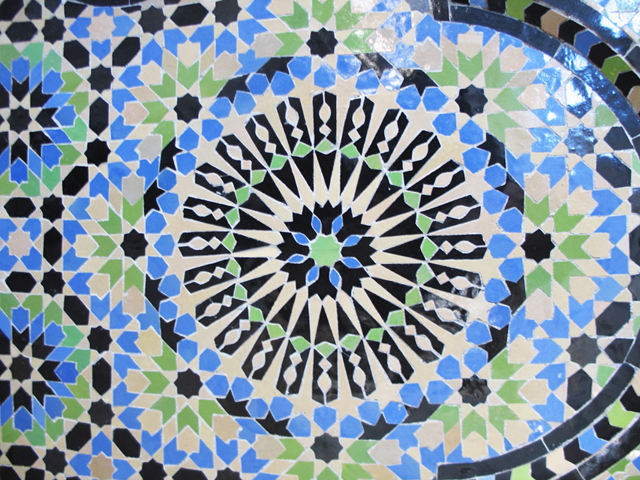
Hours of careful placement of ceramic tiles result in elaborate mosaic designs. (Photo ©2013 by Susan McKee)
Arabesque designs, such as this geometric motif, are a popular architectural detail in North African buildings.
7. Fountains
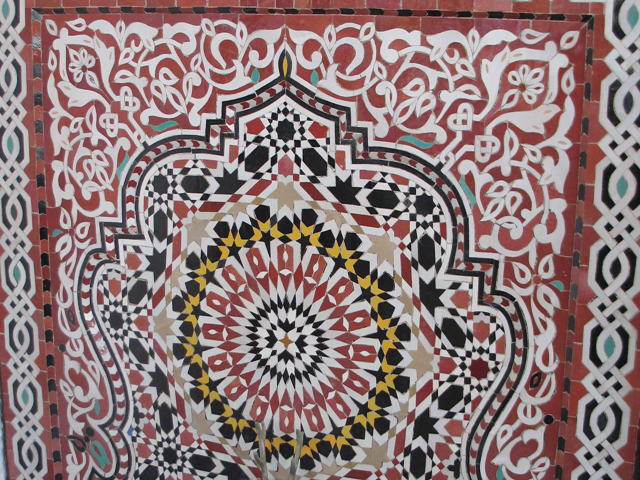
Intricate Arabesque designs are created in mosaic tile for fountain back splashes. (Photo ©2013 by Susan McKee)
Mosaic tile designs are a popular choice for fountain back splashes in Moroccan courtyards.
8. Design Detail
Each piece is chipped out by hand and plays a role in the overall design of a mosaic panel.
9. Small Tagines

These tangines, too small to be used for cooking, are meant as trinket boxes for tourists. (Photo ©2013 by Susan McKee)
Miniature tagines are easier to fit into a tourist’s suitcase than a full-size cooking vessel.
10. Fanciful Plates
Plates painted with Arabesque motifs can be used as decorative accessories or for serving food.
Related content on AFKTravel:
#InLoveWithAfrica: Falling Hard For Fez, A City With Soul
The Ateliers and Artisans of Fez
Cooking And Culture In Fez
Want to discover the finer side of Africa? Sign up for our weekly newsletter.

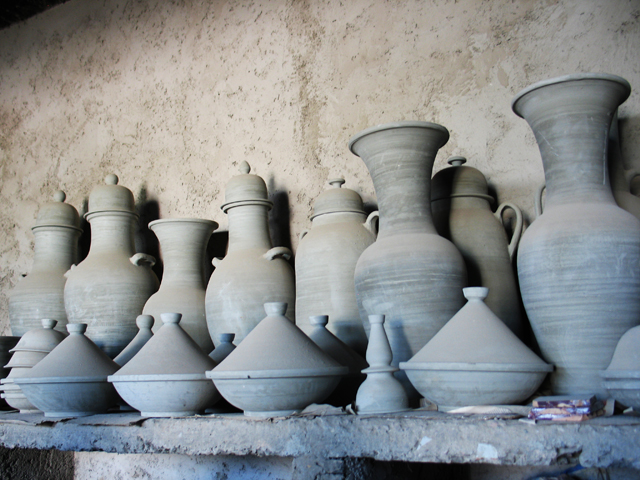
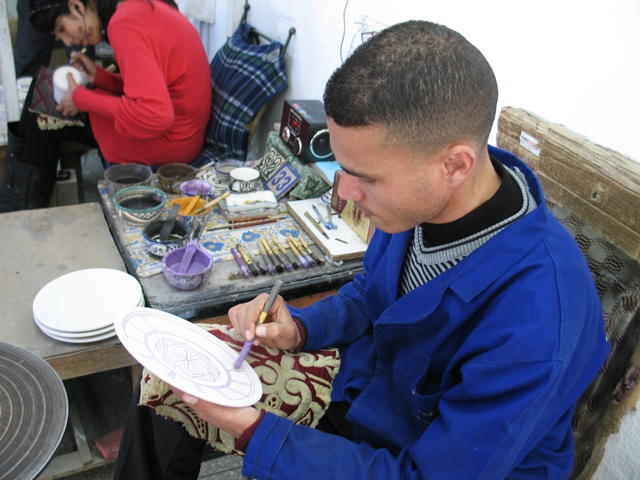
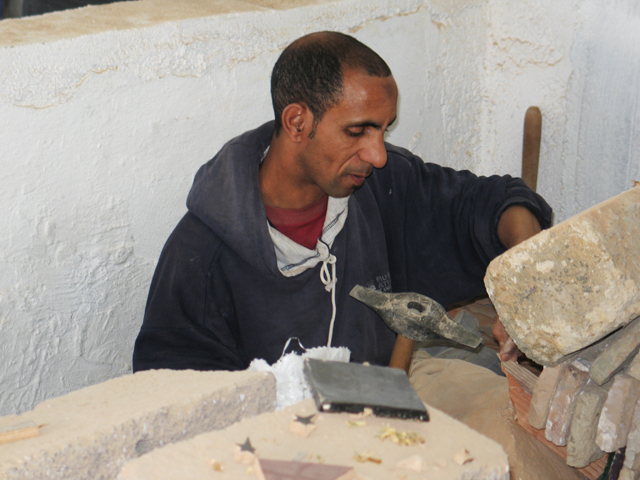
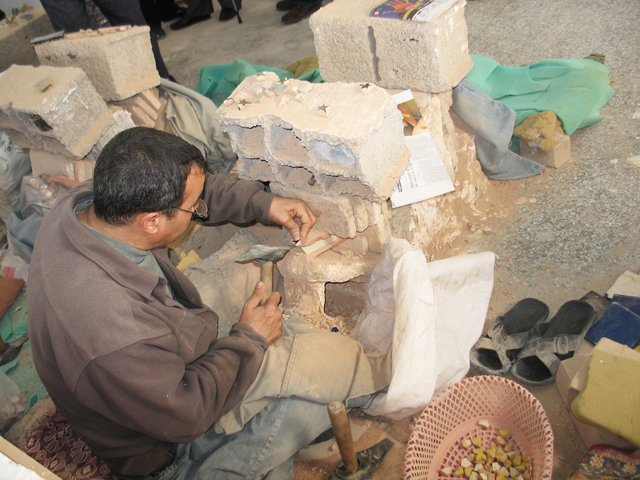



I'd really love a real tajine to make my Moroccan-style chicken. These ones looks beautiful and with some careful packing...
I’d really love a real tajine to make my Moroccan-style chicken. These ones looks beautiful and with some careful packing might make it home safely. Another great reason to visit Morocco!
I would love to learn how to make these beautiful crafts. Your picture of the bowls show an amazing collection...
I would love to learn how to make these beautiful crafts. Your picture of the bowls show an amazing collection of different designs that would put me in crafting heaven.
I enjoyed seeing the process the ceramics artists use in Morocco. I've seen some similar techniques in Turkey and really...
I enjoyed seeing the process the ceramics artists use in Morocco. I’ve seen some similar techniques in Turkey and really enjoyed it. I think I’d like one to cook chicken in too but I want to go and buy it in person!